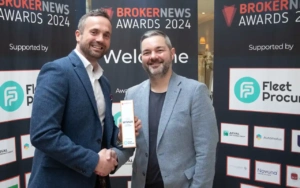VEHICLE delivery times remain in a state of absolute flux, creating a multitude of difficulties for brokers as they navigate pockets of available stock against 12 month plus waiting times.
To make the picture more complicated, and conversations with customers more complex, those OEMs with extended waiting times are, in the main, offering no price protection.
It was previously predicted - or hoped - that the production of new vehicles would return to normality by the end of 2022. Now, many manufacturers indicate this won’t be the case until at least the second or third quarter of 2023. This is a worrying thought, but I should caveat that supply has improved marginally this year, particularly for specific makes and models, and that manufacturers continue to find new ways to source the vital materials they need to drive supply up.
Philip Nothard, insight and strategy director, Cox Automotive
A recent survey from Electrifying.com, reported widely in the fleet press, said that average waiting times for new EVs was eight months, but some models were 18 months out.
Brands that had enjoyed vehicle availability – such as Kia and Vauxhall – were seeing wait times now at least doubled. The Kia Niro EV had gone from 4.5 months to nine months, said the Electrifying.com report, while drivers wanting to lease the Corsa-e and Mokka-e now had to wait 10 months (previously 3.5 months back in August).
The extended vehicle production woes are due to the continuing global shortage of semiconductor chips and key components such as lithium, not to mention the continuing conflict in Ukraine. And there’s little likelihood the issue will improve immediately.
Lee Jones, managing director of procurement platform Fleet Procure says that some OEMs will sell out of EV 2023 allocation before end of Q1 next year such is the constriction on supply of EVs.
Seemingly improved lead times on ICE of late are mostly due to legacy ordering from earlier in the year. But really it’s all over the place. Currently Hyundai Tucson petrol requires a 12 month wait; the PHEV version eight months; and seven for the HEV. It’s exactly the opposite of what you would expect. But what we do know is that EVs are a problem.
Lee Jones, managing director, Fleet Procure
Nevertheless, chief partnerships officer at lease deal aggregator Leasing.com, Paul Harrison, was more upbeat – albeit in a cautious manner.
On certain brands we are seeing waiting times of three to four months. It is only on certain brands, but there are encouraging signs for consumers and the market heading into 2023.
Paul Harrison, chief partnerships officer, Leasing.com
According to Steve Young, managing director of automotive consultancy business ICDP, it will be likely 2024 before the situation improves substantially:
Although dates differ, the combination of an improving component supply position and slowing demand, means that the new car supply position is likely to ease in the next 12-18 months, subject to any factory disruptions from energy supplies.
Steve Young, managing director, ICDP
Which means that leasing brokers will have to adjust to a changed market reality. With registrations running at more than 30% down for the year, leasing brokers might still have large order banks waiting to pay out, but 2022 sales are going to be reflective of this lower figure. And it will be the same in 2023 too.
Fleet Procure and Leasing.com are partners of Broker News.

Broker News Awards 2024 in pictures
The Broker News Awards 2024 took place at the Orrery in London’s Marylebone. Here are the pictures to remember the event

Broker of the Year 2024 winner profile: Synergy Car Leasing
Synergy Car Leasing was voted Broker of the Year 2024 by the judging panel – here’s the winner’s profile supported by Leasing.com

Broker News Awards 2024 – the winners
The Broker News Awards 2024 – supported by Fleet Procure – produced outstanding winners, with Synergy taking the Broker of the Year title

Broker News Newsletter 24 April 2024
Catch up on the latest leasing broker news in the 24 April 2024 Broker News newsletter

Leasing broker fleet down, but BCH is rising: analysis of BVRLA broker survey H2 2023
Analysis of the BVRLA leasing broker survey for H2 2023 shows the broker fleet is down, but BCH is on the rise

Novuna Vehicle Solutions and Select Lease by Mobilize add support to the Broker News Awards
Novuna Vehicle Solutions and Select Lease by Mobilize add support to the Broker News Awards 2024, which takes place in London on 25 April

Ralph Morton is the leading journalist in the leasing broker sector and editor of Broker News, the website which provides information and news for BVRLA-registered leasing brokers. He also writes extensively on the fleet and leasing market in both the UK and Europe.



